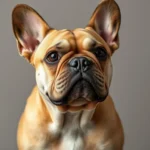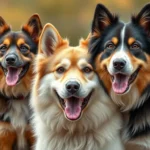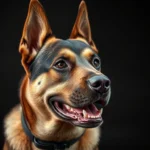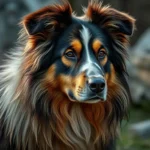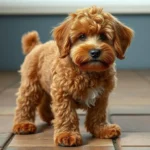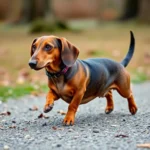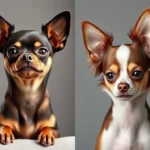
Introduction
When exploring the world of dog breeds, it’s essential to understand the diversity and characteristics that different breeds bring to our lives. Among them, the Great Danoodle stands out as a captivating hybrid breed. This mix of the majestic Great Dane and the intelligent Poodle presents a unique combination of traits that appeal to many dog lovers. In this article, we will delve into the specifics of the Great Danoodle, from its origins to its care requirements, and compare it with other prominent breeds.
Understanding Dog Breeds
What is a Dog Breed?
A dog breed is a specific group of domesticated dogs that share similar characteristics, such as appearance, behavior, and genetic makeup. These traits are typically maintained through controlled breeding practices. Genetics play a crucial role in defining these characteristics, influencing everything from size and coat type to temperament and health predispositions.
Types of Dog Breeds
Dog breeds can be categorized into several groups, including:
- Purebred: Dogs that come from a recognized lineage with documented ancestry.
- Mixed Breed: Dogs that are a combination of two or more breeds.
Additionally, breeds can fall into various functional categories, such as:
- Working: Breeds developed to perform specific tasks (e.g., guard dogs, sled dogs).
- Herding: Breeds that assist in managing livestock.
- Sporting: Breeds designed for activities like hunting and retrieving.
- Hound: Breeds known for their hunting abilities.
- Terrier: Breeds originally bred to hunt vermin.
- Toy: Small breeds often kept for companionship.
- Non-sporting: A diverse group not falling into the other categories.
The Great Danoodle: An Overview
What is a Great Danoodle?
The Great Danoodle is an impressive hybrid breed resulting from crossing a Great Dane with a Poodle. This breed combines the strength and stature of the Great Dane with the intelligence and hypoallergenic coat of the Poodle. Physically, Great Danoodles are known for their large size, often standing between 24 to 30 inches tall at the shoulder and weighing between 60 to 100 pounds. Their coat can vary, ranging from curly to wavy, and comes in various colors, including black, fawn, blue, and brindle.
History of the Great Danoodle
The origins of the Great Danoodle can be traced back to the Great Dane and Poodle, both of which have rich histories. The Great Dane, known for its imposing size and noble appearance, originated in Germany, initially bred for hunting large game. The Poodle, on the other hand, originated in Germany or France, primarily as a water retriever. The hybridization of these breeds likely began in the late 20th century as breeders aimed to create a dog that combines the best traits of both parent breeds.
Characteristics of the Great Danoodle
Temperament
The Great Danoodle is renowned for its friendly and affectionate nature. These dogs are intelligent and eager to please, making them excellent companions. They are typically gentle giants that are good with children and can coexist well with other pets when properly socialized. However, early socialization and training are crucial to ensuring they develop into well-rounded adults.
Health Considerations
Like all breeds, Great Danoodles can be prone to certain health issues. Some common concerns include hip dysplasia, bloat, and certain genetic conditions inherited from either parent breed. Their lifespan generally ranges from 10 to 15 years, depending on their health and care. Regular veterinary check-ups, a balanced diet, and a healthy lifestyle can help mitigate these risks and ensure a longer, happier life.
Caring for a Great Danoodle
Nutrition
Proper nutrition is vital for the health of your Great Danoodle. These dogs require a high-quality diet rich in protein and nutrients to support their size and energy levels. It’s essential to choose dog food specifically formulated for large breeds. Feeding schedules should be regular, ideally two meals a day, to prevent bloating, a condition that Great Danoodles may be susceptible to.
Exercise Requirements
Great Danoodles are active dogs that require regular exercise to maintain their physical and mental well-being. Daily walks of at least 30 to 60 minutes, combined with playtime, are essential. Activities such as fetch, swimming, or agility training can keep them engaged. It’s important to provide adequate exercise, especially during their puppy and adolescent stages, to help them develop a strong physique and avoid behavioral issues.
Grooming Needs
Grooming a Great Danoodle can vary significantly based on the coat type inherited from its parents. Those with a wavy or curly coat will require regular brushing (at least once a week) to prevent matting and reduce shedding. Bathing should be done as needed, typically every few months, unless they get particularly dirty. Nail trimming and dental care are also critical components of their grooming routine.
Training a Great Danoodle
Basic Training Commands
Obedience training is crucial for a Great Danoodle. Basic commands such as sit, stay, come, and down should be taught early on. These dogs are intelligent and can learn quickly, so positive reinforcement methods, such as treats and praise, work best. Consistency and patience are key, as they can be somewhat stubborn if not motivated properly.
Socialization Techniques
Early socialization is vital for Great Danoodles. Exposing them to various environments, people, and other animals can help foster a well-adjusted adult dog. Puppy classes are an excellent way to facilitate socialization and training. Gradual introductions to new experiences can help them become more confident and adaptable.
Behavioral Considerations
Like all breeds, Great Danoodles may exhibit behavioral issues if not adequately trained and socialized. Common concerns include excessive barking, chewing, or separation anxiety. Addressing these issues early through training and providing mental stimulation can help prevent them from becoming problematic. Positive reinforcement training methods are the most effective approach.
Comparing Great Danoodles to Other Breeds
Great Danoodle vs. Great Dane
When comparing the Great Danoodle to its purebred parent, the Great Dane, several differences emerge. While both breeds share an imposing size and gentle temperament, Great Danoodles tend to be more playful and energetic due to the Poodle’s influence. Additionally, Great Danoodles may have a more varied coat type, which can be lower maintenance than that of a Great Dane, known for its short hair.
Great Danoodle vs. Poodle
The Great Danoodle also differs from the Poodle in several ways. While Poodles are known for their high intelligence and hypoallergenic coats, they are generally smaller in size compared to Great Danoodles. Poodles may require more grooming due to their curly coats, while Great Danoodles can have a range of coat types that may require less frequent grooming. In terms of temperament, both breeds are friendly and intelligent, but Poodles tend to be more active and require more mental stimulation.
Hybrid vs. Purebred Breeds
Hybrid breeds like the Great Danoodle often come with both benefits and drawbacks. On the positive side, hybrids may inherit the best traits from both parent breeds, potentially leading to fewer genetic health issues. However, they may also inherit undesirable traits from either parent. It’s essential for potential owners to research both breeds thoroughly to understand what to expect from a hybrid dog.
Conclusion
The Great Danoodle is a remarkable breed that combines the best traits of the Great Dane and the Poodle. With its friendly temperament, intelligence, and unique physical characteristics, it makes an excellent family pet. However, potential owners should be prepared for the care requirements associated with this hybrid. Understanding their needs for nutrition, exercise, grooming, and training is crucial to ensuring a happy and healthy life for your Great Danoodle. As with any breed, responsible ownership and consideration of lifestyle should guide the decision to adopt or purchase a Great Danoodle.
FAQs about Great Danoodles
Are Great Danoodles hypoallergenic?
Great Danoodles can inherit the Poodle’s hypoallergenic coat, making them a suitable option for allergy sufferers. However, coat types can vary, so it’s important to consider individual dogs.
How much do Great Danoodles shed?
Shedding levels can vary significantly depending on the coat type. Those with curlier coats may shed less than those with straighter coats.
What is the average lifespan of a Great Danoodle?
The average lifespan of a Great Danoodle ranges from 10 to 15 years, depending on their health and care.
Do Great Danoodles require a lot of exercise?
Yes, Great Danoodles need regular exercise to stay healthy and happy. Daily walks and playtime are essential to meet their energy needs.
What are common health issues in Great Danoodles?
Common health issues include hip dysplasia, bloat, and certain genetic conditions. Regular vet check-ups and preventive care are important.
By understanding the unique characteristics and needs of the Great Danoodle, prospective owners can make informed decisions about welcoming this hybrid breed into their homes.
